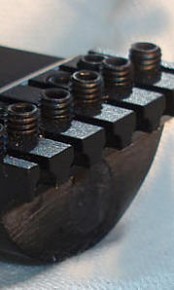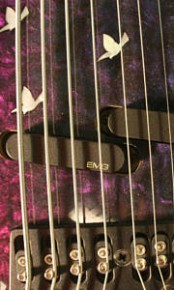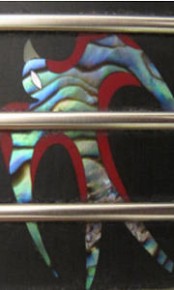



Sound Composites 'Strings' Parts

Technical Info
All Of The Support
Information That
You Need

Sonusphere Live Performance Loudspeakers ... Play Outside The Box to get the absolutely most realistic sound!

Company History Moses Innovation Over The Decades

Contact/Ordering
Contact Us, We are Here To Serve You
Phone: (001) 541-484-6068
Email: orders@mosesgraphite.com
ABOUT THE CARBON FIBER USED BY MOSES CARBON GRAPHITE USA:
Carbon fiber and graphite fiber composites offer a reinforcement option
that allows higher strength with less comparative weight, due to the
inherent stiffness of the fibers. The fibers are produced in a process
using one of two precursors derived from either PAN (polyacrylonitrile, a
thermoplastic), or pitch that is derived from either coal or oil
byproducts. These precursors are heated and then spun into thin filaments
using textile-type equipment. It is then oxidized around 260ºC under
tension, allowing the carbon chains to align. This is followed by
carbonization in nitrogen above 1000ºC, to produce carbon fibers. The
fibers are composed of 93 to 95% carbon, and have a stiffness (tensile
modulus) of 20 to 30 msi. These are the carbon fibers that are primarily
found in sporting goods. To achieve fibers where the carbon crystals are
further stretched and aligned, and thus can achieve higher stiffness,
graphitization takes place around 2000ºC, even as high as 3000ºC. These
graphite fibers are over 99% carbon, and have a tensile modulus of 60 msi
to as high as 140 msi. The best of these graphite fibers are used
primarily in aerospace applications.
Carbon and graphite fibers are subsequently sized and either woven as
textiles, or bundled together and spun onto spools in unidirectional form.
Combined with either epoxy or cyanate ester resins, they can be cured with
heat and pressure to form composite structures that are aligned to
optimize their strength in one or more directions. Pre-impregnated
composites have resins combined with the fibers in unidirectional sheets.
They are spooled and stored frozen until close to the time of use.
Graphite is a polymorph of the element carbon. diamond is another
polymorph. The two share the same chemistry, carbon, but have very
different structures and very different properties. Diamond is the
hardest mineral known to man, Graphite is one of the softest. Diamond is
an excellent electrical insulator, Graphite is a good conductor of
electricity. Diamond is the ultimate abrasive, Graphite is a very good
lubricant. Diamond is usually transparent, Graphite is opaque. Diamond
crystallizes in the Isometric system and graphite crystallizes in the
hexagonal system. Graphite is the stable form of carbon. All diamonds at
or near the surface of the Earth are currently undergoing a transformation
into Graphite. This reaction is extremely slow. All of the differences
between graphite and diamond are the result of the difference in their
respective structures. Graphite has a sheet-like structure where the atoms
all lie in a plane and are only weakly bonded to the graphite sheets above
and below. Diamond has a framework structure where the carbon atoms are
bonded to other carbon atoms in three dimensions as opposed to two in
graphite. The carbon-carbon bonds in both minerals are quite strong, but
it is the application of those bonds that make the difference.
Graphite is one of the softest minerals (a very slippery lubricant) and is
the high-strength component in composites used to build automobiles,
aircraft, and golf club shafts and many other products. It is the weakly
bonded sheets that slide by each other to yield the slipperiness or
softness. Yet when those sheets are rolled up into fibers, and those
fibers twisted into threads, the true strength of the bonds becomes
apparent. The threads are molded into shape, and held in place by a binder
(such as an epoxy resin). The resulting composites have some of the
highest strength-to-weight ratios of any materials (excluding diamond
crystals and carbon nano tubes).